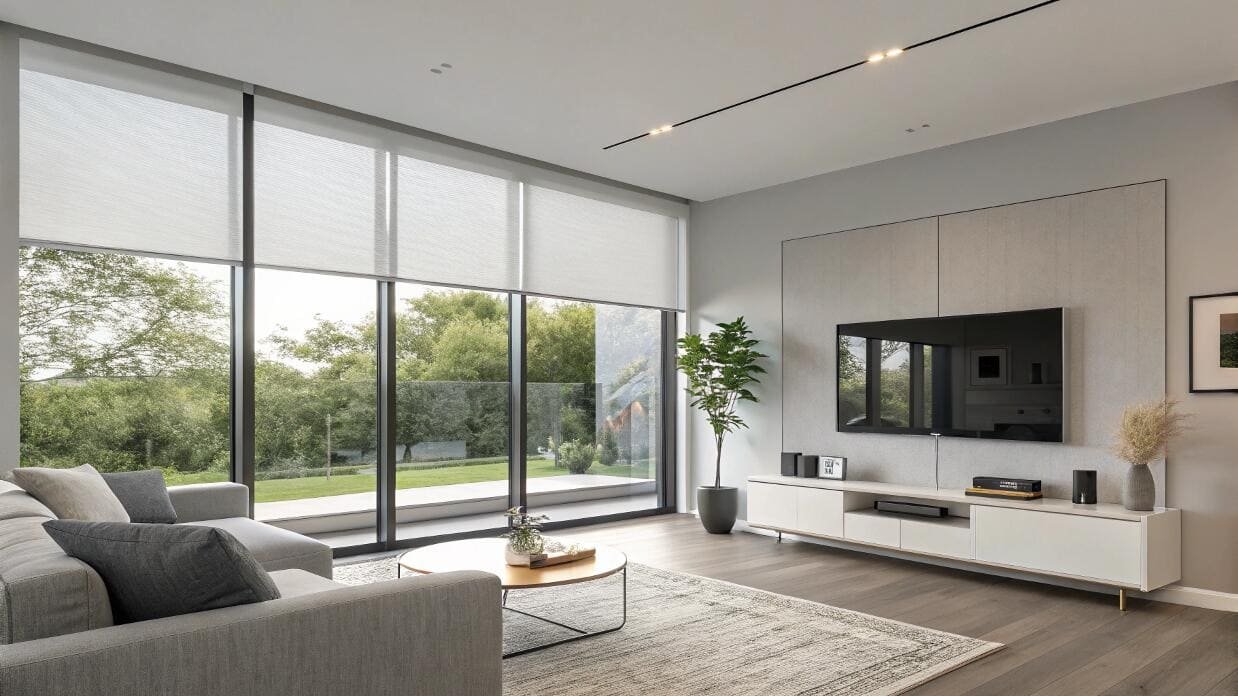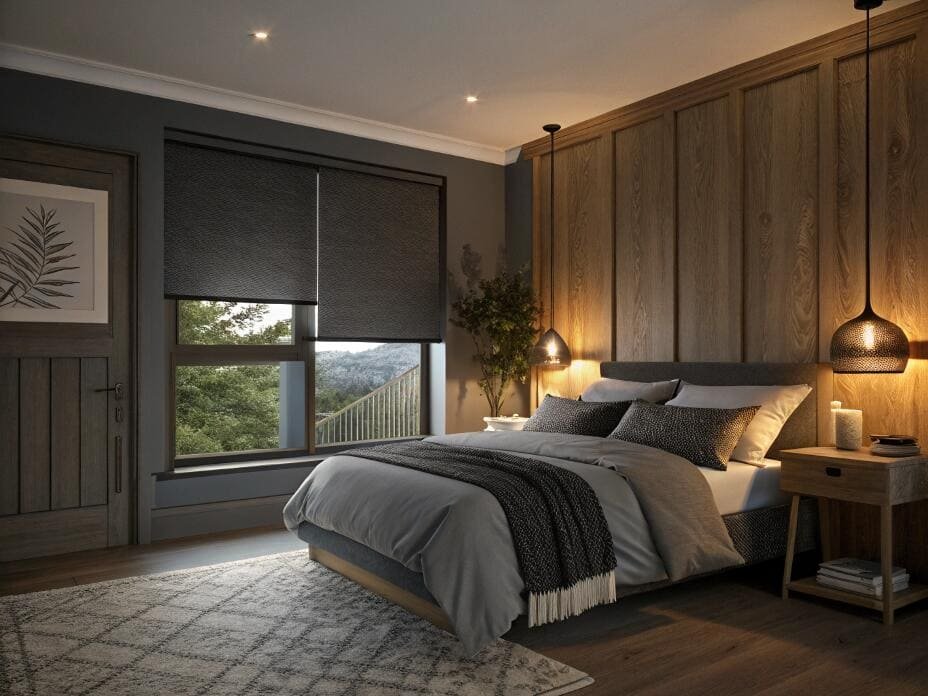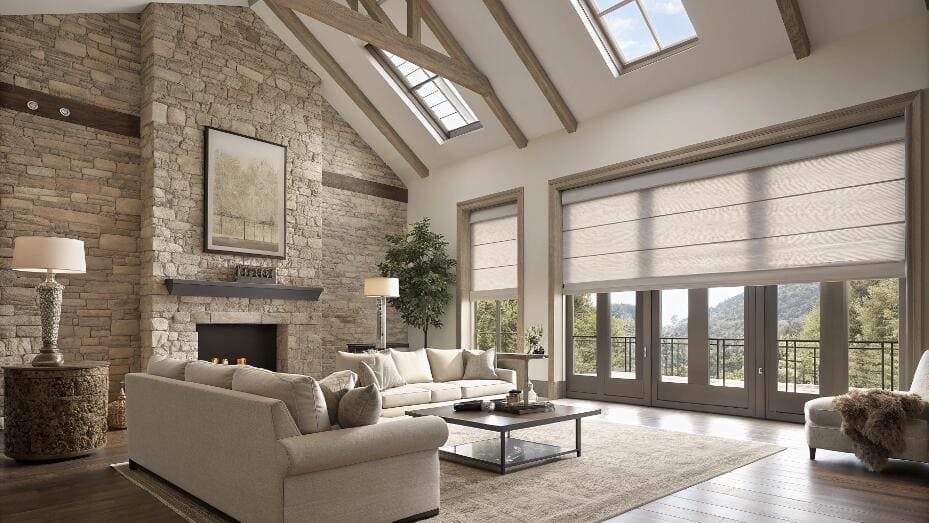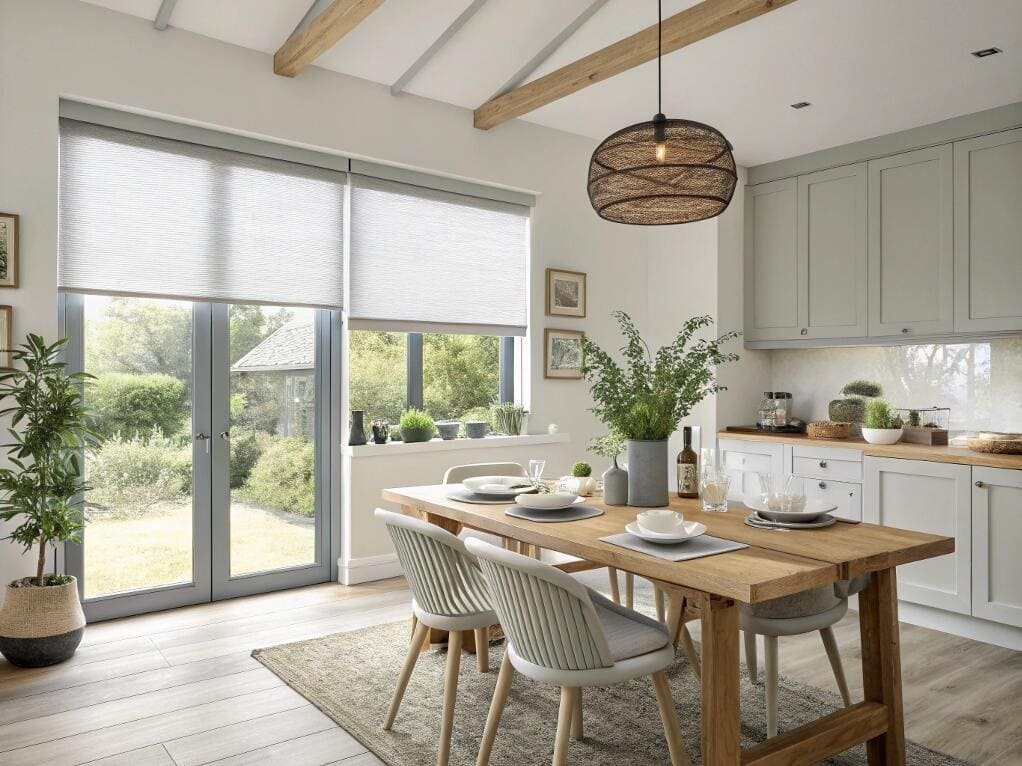You're considering electric blinds for a project, but the technology seems complicated. You're worried about power sources1, reliability, and what happens if the power goes out, making it a risky choice for a client.
Electric roller blinds use a small, quiet tubular motor2 hidden inside the roller tube. This motor is powered by a battery, a plug-in adapter, or a hardwired connection and is controlled wirelessly via a remote, a wall switch, or a smartphone app to raise and lower the fabric.

Explore our full range of 👉 Roller Shades
I always tell my project partners that the most surprising thing about motorized blinds isn't the convenience, it's the technology behind them. Electric roller blinds work on surprisingly low power consumption, making them not just a luxury upgrade but also an energy-efficient smart home solution3 that's simpler and more reliable than you think.
How Do Electric Blinds Get Their Power?
You want a clean, wire-free look, but you're worried about messy cables or complicated electrical work. How do you power these blinds without wrecking the room's aesthetic or requiring an electrician for every window?
Electric blinds get power in four main ways: a rechargeable battery pack4 for a wire-free install, a simple plug-in adapter5, a direct hardwired connection6 for new builds, or an integrated solar panel7 for sustainable energy. The best option depends on your project's needs.

Choosing the right power source is the most critical decision for a successful installation. Here’s how I break it down for my clients to ensure we match the power to the project.
| Power Source | Best For | Pros | Cons |
|---|---|---|---|
| Rechargeable Battery | Retrofits, wire-free look | Easy to install, no electrician needed, clean aesthetic | Requires charging every 6-12 months |
| Plug-In (DC Adapter) | Easy access to outlets | Constant power, no charging needed | Visible wire, requires a nearby outlet |
| Hardwired (AC) | New construction, major renovations | Completely hidden wires, reliable power, no batteries | Requires an electrician for installation |
| Solar Panel | Sun-facing windows, eco-friendly projects | Self-charging, energy-efficient | Depends on sunlight, higher initial cost |
And do they use a lot of electricity? No. A motorized blind consumes very little power, comparable to charging your phone or powering a small LED light. Even a hardwired system will have a negligible impact on an electricity bill.
How Long Do the Batteries Last and How Do You Charge Them?
The idea of a wire-free battery is great, but you dread the thought of clients constantly climbing ladders to charge their blinds. Is the maintenance8 going to be a deal-breaker?
A single charge on a modern lithium-ion battery pack typically lasts between 6 and 12 months with average daily use. Recharging is simple using a USB-C or magnetic charging cable and usually takes 4-6 hours, just like charging a smartphone.

Explore our full range of 👉 Roman Shades
Battery technology has come a long way, and the systems we use today are designed for long-term convenience, not constant upkeep. Let's look at the specifics.
- Battery Type: Nearly all high-quality motorized blinds now use rechargeable lithium-ion battery packs. These are integrated into the motor head or housed in a separate wand that clicks into place. They are lightweight, powerful, and designed for a long life.
- Charging Frequency: For a blind that is used twice a day (once up, once down), you can realistically expect to go up to a full year between charges. Heavier fabrics or more frequent use might bring that closer to six months.
- The Charging Process: This is the best part. You don't need to take the blind down. You simply connect a long charging cable (much like a phone charger) to a port on the motor head. Many of our VelaBlinds models use a magnetic connector that snaps right into place, making it incredibly easy.
What Happens if the Power Fails, and Are There Any Downsides?
You love the idea of automation, but what if the battery dies unexpectedly or the power goes out? Are your clients going to be trapped in a room they can't control?
You're never stuck. Many advanced motors, including some of our specialized motors at VelaBlinds, feature a manual override9. You can simply pull the blind to operate it by hand. The main disadvantages of motorization10 are the higher initial cost and the reliance on a power source.

This is a critical question, and it's why we invested in developing better motor technology. A client should never lose function.
- Can You Manually Pull Down Electric Blinds? With standard motors, no. If the power is out, the blind stays put. However, this was a major pain point for users. That's why at VelaBlinds, we offer a hybrid manual-electric motor. If the battery is dead or you just prefer to, you can operate it manually with a simple pull, just like a cordless blind. It gives you the best of both worlds.
- What Are the Disadvantages?
- Cost: Motorization is an upgrade, and it adds to the per-unit cost of a window treatment.
- Reliance on Power: Whether it's the grid or a battery, the motor needs electricity to function (unless you have a manual override).
- Potential for Maintenance: While modern motors are incredibly reliable, they are still electronic devices and have more potential points of failure than a simple chain or cord.
Is It Really Worth the Extra Cost to Get Motorized Blinds?
The higher price tag for motorization makes you hesitate. Is the convenience just a gimmick, or is there a genuine return on investment11 that justifies the cost for your projects?
Yes, for many projects, motorized blinds are absolutely worth it. The value comes from measurable energy savings12 through automation, enhanced safety by eliminating cords, and unparalleled convenience, especially for hard-to-reach windows or large commercial spaces.

When clients ask if it's worth it, I don't talk about it as a luxury. I frame it as a functional upgrade with a clear return.
- Energy Savings: This is the biggest financial benefit. By scheduling blinds to automatically close during the hottest parts of the day, you can significantly reduce solar heat gain, lowering your air conditioning costs. In winter, you can do the reverse to maximize passive heating.
- Convenience and Accessibility: For windows that are high up, behind furniture, or for users with mobility challenges, motorization isn't a luxury—it's a necessity. In an office with dozens of windows, being able to close all blinds with a single button press saves a huge amount of time and effort.
- Safety: In homes with children or pets, or in commercial spaces like daycares and schools, going cordless isn't just a feature, it's a critical safety requirement. Motorization is the ultimate cordless solution13.
Conclusion
Electric blinds are a simple, low-power solution that adds immense value to a space. They are a smart investment for modern homes, efficient offices, and spaces prioritizing safety and accessibility for everyone.
Partner with VelaBlinds for Your Next Project
Smart window treatments shouldn't be complicated. After working with 500+ distributors and contractors worldwide, I've streamlined the process to get you quality products, competitive pricing, and reliable support - every time.
Why project professionals choose VelaBlinds:
- ✅ Fast, Accurate Quotes - Detailed specs and pricing within 24 hours
- ✅ Transparent Pricing - No hidden fees, volume discounts clearly outlined
- ✅ Quality Assurance - Direct partnerships with certified OEM manufacturers
- ✅ Project Support - Dedicated account manager from quote to delivery
Start your next project:
📧 Quick Quote: Send your requirements to info@velablinds.com
📱 Direct Contact: WhatsApp +86 137 2012 8317
🌐 Browse Solutions: https://velablinds.com/
📁 Product Resources: Access spec sheets, catalogs & project files
Paul Chen, Founder
"I built VelaBlinds to solve the real challenges I faced as a project buyer - long lead times, unclear specs, and unreliable suppliers. Let's discuss how we can power your projects with smarter blinds."
Serving distributors and contractors across North America, Europe, and Australia since 2018.
-
Discover the various power options available for electric blinds to suit your needs. ↩
-
Learn about tubular motors and how they power electric blinds efficiently. ↩
-
Understand how electric blinds contribute to energy efficiency in smart homes. ↩
-
Understand the advantages of using rechargeable battery packs for electric blinds. ↩
-
Find out how plug-in adapters provide a reliable power source for electric blinds. ↩
-
Learn about hardwired connections and their benefits for permanent installations. ↩
-
Explore the eco-friendly option of solar panels for powering electric blinds. ↩
-
Learn about the maintenance needs of electric blinds to ensure long-term reliability. ↩
-
Understand how manual overrides work to ensure functionality during power outages. ↩
-
Learn about the advantages of motorization in enhancing convenience and safety. ↩
-
Explore the financial benefits of investing in motorized blinds for your projects. ↩
-
Explore how motorized blinds can help reduce energy costs through automation. ↩
-
Discover the benefits of cordless solutions in enhancing safety and convenience. ↩



